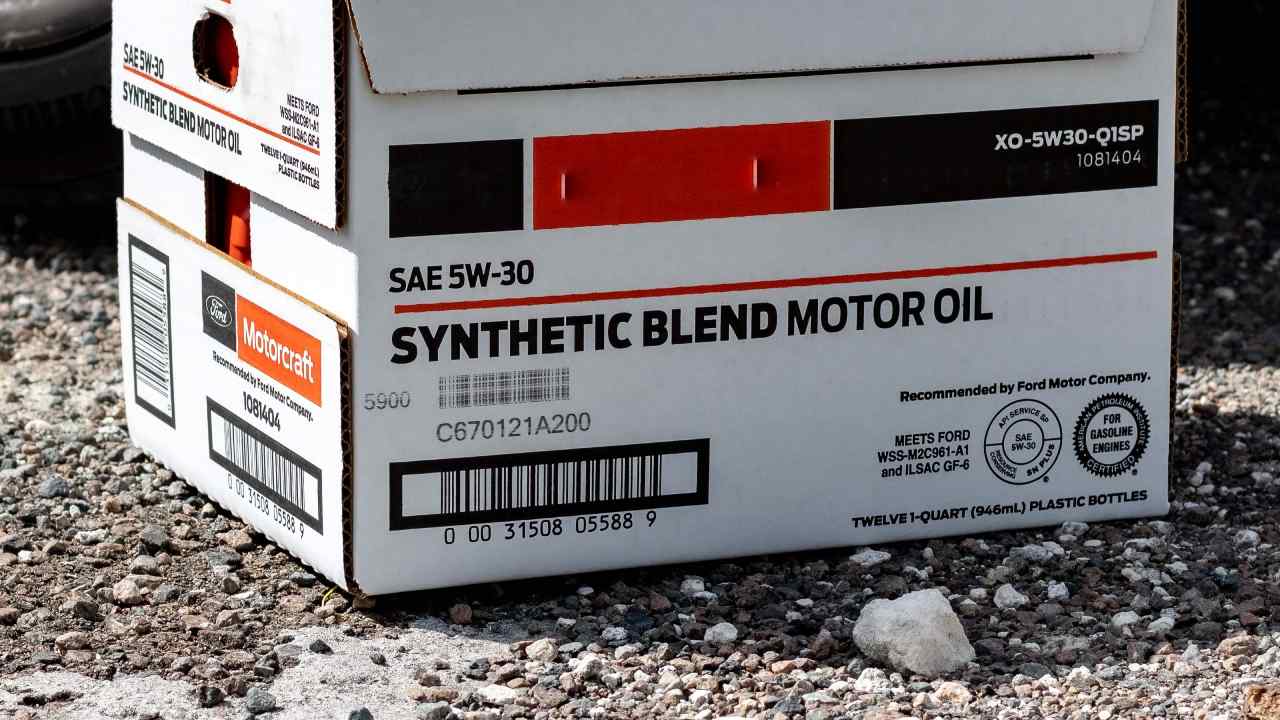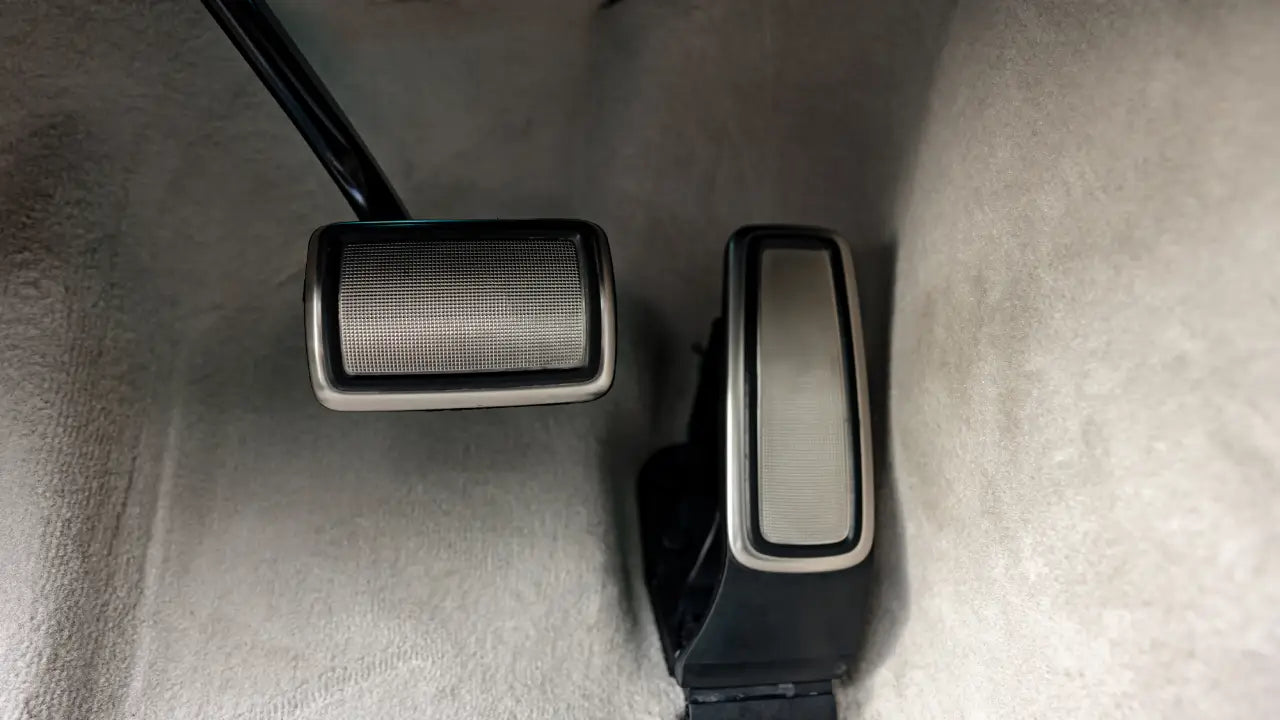How to Tell When It's Time for an Oil Change?
Share
Welcome to our comprehensive guide on deciphering the signs and signals that indicate when it's time for an oil change in your vehicle. As a responsible car owner, staying attuned to the needs of your engine is paramount for ensuring its longevity and performance. If you know when to change oil, you'll be better equipped to safeguard your engine against premature wear and damage, ultimately saving you time, money, and headaches in the long run.
In this article, we'll explore the various factors that influence oil change frequency, from traditional mileage-based recommendations to modern considerations such as driving conditions and oil quality. So, buckle up and get ready to embark on an enlightening exploration into oil change intervals. If you read this guide till the end, you'll be equipped with the tools and expertise to keep your engine running smoothly, mile after mile.

Why is Consistent and Regular Oil Change Crucial for Engine Lifespan?
Consistent and regular oil change is essential for extending your engine's lifespan. Let’s look at the key reasons why:
Lubrication
Engine oil serves as the lifeblood of your vehicle’s engine, providing essential lubrication to minimize friction and wear between moving parts. Without adequate lubrication, friction can cause excessive heat and metal-on-metal contact, leading to premature wear and damage to critical engine components.
Heat Dissipation
Besides lubricating engine components, a regular oil change is crucial in dissipating heat generated during engine operation. As the oil circulates through the engine, it absorbs heat from the combustion process and transfers it away from critical components, helping to maintain optimal operating temperature and prevent overheating.
Contaminant Removal
Over time, engine oil can become contaminated with dirt, debris, and combustion byproducts, compromising its effectiveness as a lubricant. Regular oil change remove old, contaminated oil and replaces it with fresh, clean oil, ensuring the engine remains properly lubricated and protected against friction and wear.
Seal Conditioning
Engine oil helps condition and maintain the integrity of seals and gaskets within the engine, preventing leaks and maintaining proper compression. Over time, old oil can break down and lose its sealing properties, which increases the risk of oil leaks and other engine issues. A regular oil change helps keep seals and gaskets in good condition, reducing the likelihood of leaks and prolonging engine life.
Preventative Maintenance
Consistent oil change is a form of preventive maintenance that helps identify and address potential issues before they escalate into more significant problems. During an oil change, mechanics can inspect the engine for signs of wear, leaks, or other problems, allowing them to address any issues early on and prevent costly repairs.
How Do Your Driving Habits Influence the Frequency of Oil Change?
Driving habits have a crucial role in determining how often you should change your oil. Suppose you frequently take short trips or stop-and-go driving, such as city commuting. In that case, your car engine may not reach optimal operating temperatures, accumulating contaminants in the oil. Similarly, hauling heavy loads or towing trailers can increase engine stress and accelerate oil degradation. In these cases, more frequent oil changes every 3,000 to 5,000 miles may be necessary to maintain engine health.
On the other hand, if you primarily drive long distances at consistent speeds, such as highway driving, your car engine is more likely to reach its ideal operating temperature, allowing contaminants to burn off more effectively and reducing strain on the oil. As a result, you might extend the interval between an oil change to 5,000 to 7,500 miles or follow the manufacturer’s recommended schedule.

As you can see, understanding your driving patterns and conditions is crucial in determining your vehicle's optimal oil change frequency. So, factors like driving terrain, climate, and load are essential to establish a maintenance schedule for oil change.
What are Overdue Oil Change Symptoms?
Recognizing the symptoms of an overdue oil change is crucial for preventing potential damage and ensuring the continued reliability of your car. Some symptoms that indicate your vehicle may be overdue for an oil change include:
- Engine Noise: As oil breaks down and loses viscosity over time, it becomes less effective at lubricating engine components. This can increase friction and metal-to-metal contact within the engine, resulting in louder engine noise. So, an overdue oil change causes knocking, tapping, or rumbling sounds, especially during startup or acceleration.
- Decreased Fuel Efficiency: Dirty or degraded oil can cause excessive friction and drag within the engine, reducing fuel efficiency. As the engine works harder to overcome this resistance, it may consume more fuel to maintain performance. If you notice a sudden drop in fuel efficiency, it could indicate an overdue oil change.
- Engine Overheating: Oil becomes contaminated or breaks down over time, so it cannot absorb and transfer heat diminishes. This can lead to inadequate cooling of engine components, resulting in overheating. So, an overdue oil change causes engine overheating.
- Dark or Gritty Oil: Overdue oil can appear dark or murky, indicating the presence of contaminants such as dirt, debris, and engine byproducts. Also, old oil may feel gritty or sludgy, signifying its diminished lubricating properties. If you notice these characteristics while inspecting the oil on the dipstick, it indicates an overdue oil change.
- Check Engine Light: In modern vehicles, the check engine light is a warning indicator for various engine-related problems, including an overdue oil change.

What are the Signs Your Car Needs An Oil Change?
Recognizing the signs indicating when your car needs an oil change is essential for maintaining engine health and preventing potential damage. Let's look at the oil change signs below:
- Exhaust Smoke: If you notice excessive smoke from your vehicle's exhaust, it could be a sign that the engine oil is past its prime. Old, degraded oil can leak into the combustion chamber and burn with the fuel, resulting in blue or grayish smoke emitting from the tailpipe.
- Oil Smell Inside the Car: A strong odor of burnt oil inside your car's cabin could indicate an oil leak or that oil is seeping into the engine compartment and getting heated up, emitting a noticeable smell. This may require immediate attention to prevent further damage to the engine.
- Loud Engine Noise: When the oil becomes old and degraded, it loses its ability to lubricate effectively, leading to increased friction and louder engine noise as the metal components rub against each other.
- Dashboard Warning Light: Modern vehicles have an oil change indicator lights or check engine lights illuminating when to change oil.
- Decreased Performance: Sluggish acceleration and reduced power output are common signs of oil change.
- Oil Level Dropping: If you notice a significant decrease in oil level over a short period, it could indicate an oil leak or excessive oil consumption due to engine issues.
- Metallic Shimmer in Oil: If you observe a metallic shimmer during an oil change, it could indicate metal particles suspended in the oil. This suggests excessive wear and tear on engine components, necessitating further inspection and potential repairs.
What Does Oil Change Indicator Lights Mean?
Oil change indicator lights are dashboard warning lights that alert drivers when it’s time to change their engine oil. These lights are usually triggered by the vehicle’s onboard computer system based on factors such as engine operating hours, engine revolutions, and driving conditions. Here is what the different oil change indicator lights typically mean:

- Service Required: The oil change indicator light may simply display a message such as “Service Required” or “Oil Change Required.” This indicates that the vehicle has reached the predetermined interval for an oil change based on factors like mileage or elapsed time since the last service.
- Oil Change Reminder: Some vehicles have a dedicated oil change reminder light that illuminates when it’s time for an oil change. A symbol of an oil droplet often accompanies this light.
- Check Oil Level: Some vehicles feature a warning light that illuminates when the engine oil level is low. This indicates that the oil level is below the recommended minimum and requires topping up or an oil change.
- Low Oil Pressure Warning: In some cases, an oil pressure warning light may indicate low oil pressure, possibly due to insufficient oil level, oil pump failure, or other issues. Low oil pressure can lead to engine damage if not addressed promptly, so it's crucial to pull over safely and check the oil level immediately.
- Engine Malfunction: The vehicle's check engine light may illuminate severe oil-related issues, such as starvation or significant oil leaks. This indicates a more severe problem that requires immediate attention from a qualified mechanic.
Why Do You Need to Reset Your Oil Change Light After Every Oil Change?
Resetting the oil change light after every oil change is necessary because the light or indicator is typically programmed to alert drivers based on predetermined intervals or parameters. Here’s why resetting the oil change light is essential:
- Accuracy: The oil change light is designed to remind drivers when it’s for an oil change based on factors such as mileage, engine operating conditions, and oil quality. So, resetting the light after each oil change ensures that future alerts are accurate.
- Maintenance Schedule: Modern vehicles often have advanced maintenance reminder systems that calculate when maintenance tasks, including oil changes, are due. Resetting the oil change light synchronizes the maintenance schedule with the actual service performed.
- Service Records: Resetting the oil change light accurately records the vehicle’s service history. It ensures the vehicle receives proper maintenance over time and provides helpful documentation for warranty claims, resale value, and future maintenance planning.
- Warranty Compliance: Some vehicle warranties require regular maintenance, including timely oil changes. By resetting the oil change light after each service, drives can demonstrate compliance with the manufacturer’s recommended maintenance schedule.

As you can see, after every oil change, resetting the oil change light is a simple but important step in maintaining a vehicle’s health and ensuring it receives proper care and attention over time.
When Should You Change Your Oil?
While conventionally, oil changes are advised every 3,000 miles or every 3 to 6 months, modern vehicles and advanced oils, like synthetic oil, have extended this duration to 5,000 to 10,000 miles or every six months to a year. However, variations in driving conditions, encompassing extreme temperatures, frequent stops-and-go traffic, towing, or off-road terrain, may necessitate more frequent oil changes. So, regularly inspecting your engine oil level and quality is imperative.
Does Performing Your Oil Change Void Your Car Warranty?
Performing your oil change generally doesn’t nullify your warranty, but there are essential considerations to remember to ensure you don’t inadvertently void your warranty coverage. First and foremost, it is crucial to use the correct type and grade of oil as specified by the manufacturer. Using the wrong oil can damage engines and potentially void your warranty.
Therefore, as long as you use the correct oil, follow the manufacturer’s guidelines, dispose of the old oil responsibly, and adhere to any warranty stipulations, performing your oil change should not impact your car’s warranty coverage. If you want to learn more about it, all you need to do is read our more detailed blog about whether to change your own oil voids warranty by clicking here.
When to Change Different Types of Oils?
Different types of oils have different properties and performance characteristics, which influence the recommended intervals for oil changes. Let’s delve into the specifics of when to change different types of oils below:

Conventional Oil
Derived from crude oil, conventional oil is the traditional choice for engine lubrication. Due to its molecular structure, it tends to break down more quickly than synthetic oils. As a result, it’s generally recommended to change conventional oil every 3,000 to 5,000 miles or every three to six months, whichever comes first. However, advancements in oil technology and engine design have extended the interval for some vehicles.
Synthetic Oil
Synthetic oil is chemically engineered to offer superior performance and longevity compared to conventional oil. It maintains its viscosity better at higher temperatures and flows more freely at lower temperatures, providing better engine protection. Synthetic oil change intervals are typically longer, ranging from 7,500 to 10,000 miles or even up to 15,000 miles for some high-quality oils.
Synthetic Blend Oil
Synthetic blend oils combine conventional and synthetic base oils to balance performance and cost-effectiveness. They provide better protection than conventional oil but are more affordable than full synthetic oils. Synthetic blend oil change intervals are generally similar to those of conventional oil, ranging from 5,000 to 7,500 miles, depending on driving conditions and manufacturer recommendations.
High-Mileage Oil
High-mileage oils are specifically formulated for vehicles with over 75,000 miles on the odometer. They contain additives that help rejuvenate seals and rejuvenate seals and reduce oil consumption, addressing common issues in older engines. High-mileage oil change intervals are typically in line with conventional or synthetic blend oils, ranging from 3,000 to 5,000 miles, depending on the manufacturer's specifications and driving conditions.
Diesel Oil
The recommended oil change interval for diesel engines varies depending on engine type, manufacturer recommendations, and driving conditions. Modern diesel engines and high-quality synthetic oils can often go longer between oil changes, with intervals ranging from 5,000 to 15,000 miles or more. However, it's essential to consider factors like towing, hauling heavy loads, and frequent stop-and-go driving, which can accelerate oil degradation and necessitate more frequent changes.
Racing Oil
Racing oils are specially formulated for high-performance engines subjected to extreme conditions on the track. They offer exceptional lubrication and thermal stability to withstand the rigors of racing. The change interval for racing oil depends on factors such as the type of racing, engine modifications, and oil quality. In general, racing oil should be changed more frequently than conventional or synthetic oils, often after every race or at shorter intervals, as specified by the manufacturer or engine builder.
What Happens If You Don't Change Your Engine Oil in Time?
If you don’t change your engine oil in time, it can lead to many serious problems, from overheating to engine damage. Here is a more detailed explanation of what happens if you don’t change your engine oil in time:

Buildup of Contaminants
Engine oil circulates through the engine, picking up dirt, metal particles, and other contaminants. Over time, these contaminants can accumulate in the oil, forming sludge. If the oil isn’t changed regularly, this sludge can clog oil passages, restrict oil flow, and impair the oil’s ability to lubricate and protect the engine components.
Reduced Lubrication and Increased Friction
Engine oil plays a crucial role in lubricating moving parts within the engine, such as pistons, crankshaft bearings, and camshafts. As oil ages, it undergoes thermal and chemical degradation, losing its viscosity and lubricating properties. Without proper lubrication, metal surfaces can come into contact with each other, leading to increased friction and wear. This can cause accelerated wear on engine components, reducing their lifespan and potentially causing them to fail prematurely.
Overheating
Over time, as oil ages and becomes contaminated, its ability to absorb and dissipate heat diminishes. This can result in high operating temperatures within the engine, which can lead to thermal breakdown of the oil. When oil breaks down due to overheating, it loses its ability to lubricate effectively, further exacerbating friction and wear on engine components.
Corrosion and Rust
Engine oil contains additives to protect against corrosion and rust formation on metal surfaces. However, these additives can become depleted over time, especially if the oil is not changed regularly. Without adequate protection, exposed metal surfaces within the engine can corrode and rust, leading to further damage and degradation of engine components.
Engine Failure
Ultimately, the combination of reduced lubrication, increased friction, overheating, and the accumulation of deposits can lead to catastrophic engine failure. This can manifest as seized pistons, spun bearings, scored cylinder walls, or severe mechanical issues that render the engine inoperable. In such cases, extensive repairs or engine replacement may be necessary, resulting in significant expense and inconvenience for the vehicle owner.
Voided Car Warranty
Neglecting to change oil in a timely can void your vehicle warranty. Most warranties include provisions requiring owners to adhere to manufacturer-recommended maintenance schedules. If you fail to meet these requirements and it leads to damage or failure of covered components, the warranty may be voided, and you could be responsible for the repair costs.
FAQs About Oil Change
Can I switch between different types or brands of oil during oil changes?
It is generally best to stick with the same type and brand of oil for consistency and compatibility with your vehicle's engine. However, if you need to switch oil types or brands, ensure that the new oil meets the specifications recommended by the vehicle manufacturer to avoid potential issues.
Is it necessary to change the oil filter every time I change the oil?
Yes, it is generally recommended to replace the oil filter with every oil change. The oil filter helps remove contaminants and debris from the oil, ensuring optimal engine lubrication and performance. A clogged or dirty oil filter can reduce oil flow and lead to engine damage.
Is it normal for my car to consume oil between oil changes?
Some oil consumption between oil changes is considered normal, especially in older vehicles or those with high mileage. However, excessive oil consumption could indicate underlying engine issues such as leaks, worn piston rings, or valve seal problems, which should be addressed promptly.













